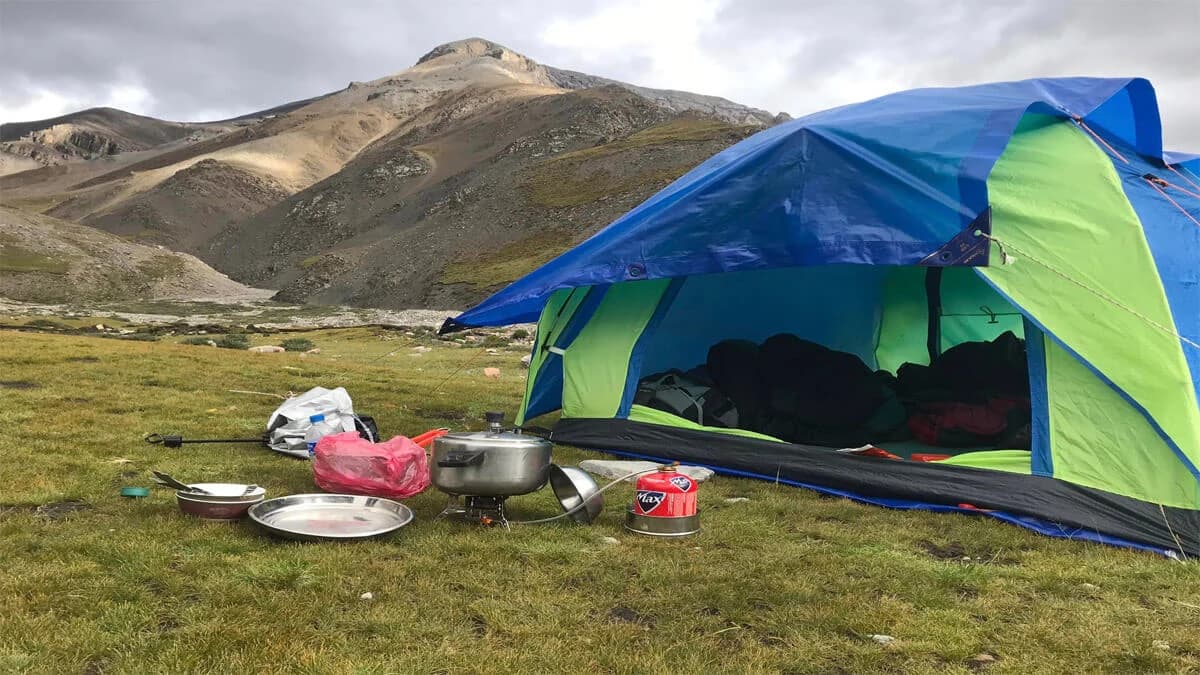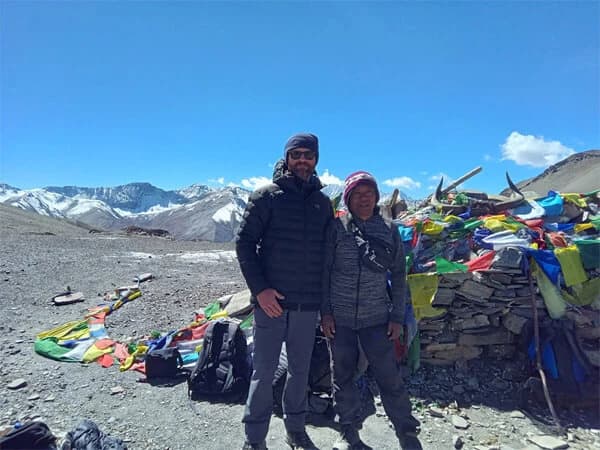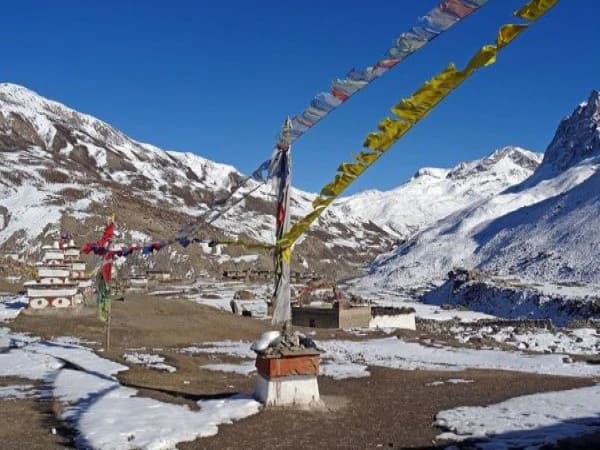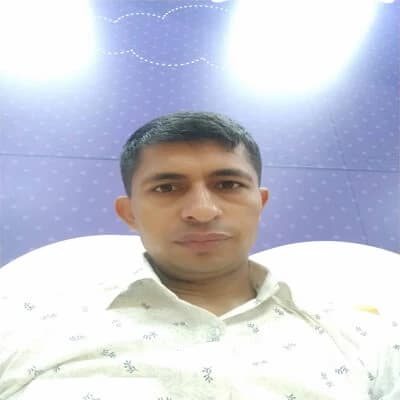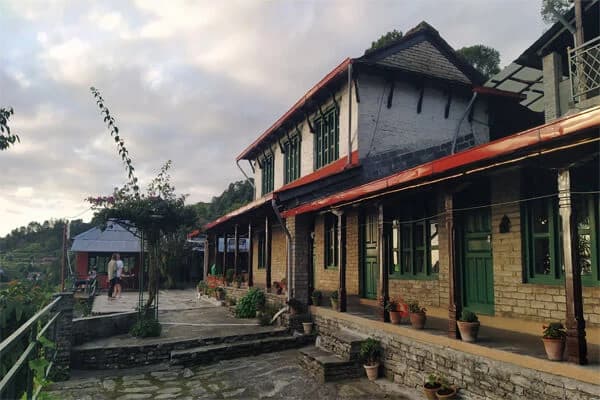The Upper Dolpo Trek is a remote and stunning adventure through one of the most isolated regions of Nepal. Nestled in the northwestern part of the country, bordering Tibet, Upper Dolpo is known for its breathtaking landscapes, ancient Tibetan culture, and pristine wilderness. This trek offers a truly off-the-beaten-path experience, far from the more commercial trekking routes like Everest Base Camp Trek and Annapurna Base Camp Trek.
Beginner’s Guide to Upper Dolpo Trek
Upper Dolpo trek for Beginners presents both incredible rewards and unique challenges. In this guide, we’ll cover everything you need to know to prepare for the trek, from the trail to logistics, gear, and cultural insights. Nepal Trekking Routes, a highly experienced local agency, can help you navigate this wild and rugged terrain with their expertise and tailored services.
Overview of Upper Dolpo Trek
The Upper Dolpo region is part of Shey Phoksundo National Park, Nepal’s largest national park, known for its unspoiled beauty. The trek to Upper Dolpo takes you through dramatic landscapes ranging from arid highlands to lush valleys, with snow-capped peaks, turquoise lakes, and plateaus.
This trek is special because it remains largely untouched by modernity. The region’s Tibetan-influenced culture has remained intact, making it one of the last pure Tibetan Buddhism and Bonpo traditions enclaves. The Upper Dolpo Trek typically lasts 20-27 days, depending on the route you take, and includes a series of high passes, reaching elevations above 5,000 meters. It’s a challenging trek that demands both physical and mental preparation.
Why Choose Upper Dolpo?
The Upper Dolpo Trek is an ideal choice for trekkers seeking:
- Solitude: This region is far from the crowds of more famous trekking areas like Everest or Annapurna. You’ll encounter fewer trekkers, giving you a deep sense of isolation and serenity.
- Authentic Culture: The local inhabitants, Known as Dolpo-pa, follow Tibetan Buddhism and the ancient Bon religion. Their traditions, lifestyle, and monasteries provide a fascinating cultural experience.
- Stunning Natural Beauty: Upper Dolpo offers some of the most breathtaking landscapes in the Himalayas. Expect to see Shey Phoksundo Lake, vast high-altitude deserts, remote valleys, and views of towering peaks.
- Off-the-Beaten-Path Adventure: The remoteness and difficulty of the upper Dolpo trek make it a true wilderness experience for those who want to challenge themselves in one of the least explored regions of Nepal.
Permits for Upper Dolpo
Because Upper Dolpo is a restricted area, you will need special permits to trek there. The cost is higher compared to other regions due to its protected status.
- Restricted Area Permit (Upper Dolpo): USD 500 per person for the first 10 days, and $50 for each additional day.
- Shey Phoksundo National Park Permit: USD 30 per person.
- Trekking Information Management System (TIMS) Card: USD 20 per person.
Nepal Trekking Routes handles all these logistics, ensuring your permits are arranged before you start the trek.
Best Time to Trek Upper Dolpo
The best time to trek in Upper Dolpo is during the pre-monsoon season, spring (May-June), and the post-monsoon season, autumn (September-October). These months offer clear skies and stable weather. During these periods, the passes are generally snow-free, and the temperatures are manageable.
Avoid trekking during the winter (December-February) due to heavy snowfall, which can block the high passes, and the monsoon season (July-August) due to rain and landslides, particularly in lower regions.
Planning your trip
How to Get There
The trek to Upper Dolpo starts with a flight from Kathmandu to Nepalgunj, followed by a second flight to Juphal, the actual starting point of the trek. Juphal is a small airstrip town in the Dolpa district. From there, the trail leads through villages like Dunai, Tarakot, and Ringmo, gradually ascending to the heart of Upper Dolpo.

Nepal Trekking Routes handles all internal flights and transportation, ensuring a seamless experience.
Trekking Gear and Equipment
Since Upper Dolpo is a remote region with basic amenities, you need to be self-sufficient in gear and equipment. Here’s a list of essential items you should bring:
Clothing
- Base layers: Thermal tops and bottoms to keep warm at high altitudes.
- Insulating layers: A fleece or down jacket for warmth in the cold mornings and evenings.
- Outer layers: Waterproof and windproof jacket and pants to protect against the elements.
- Gloves, hats, and scarves: To protect your hands and face from cold winds.
- Trekking boots: High-quality, broken-in trekking boots with good ankle support.
Camping and Trekking Gear
- Sleeping bag: A 4-season sleeping bag rated for temperatures down to -10°C or lower.
- Trekking poles: Useful for balance on rough terrain and steep ascents/descents.
- Water purification tablets: Clean water is not always readily available, especially in more remote areas.
- First aid kit: Basic medical supplies including blister care, pain relievers, and altitude sickness medication.
How to Prepare for the Upper Dolpo Trek
While Upper Dolpo is incredibly rewarding, it is also demanding. Proper preparation is key to ensuring a successful trek.
Physical Fitness
The Upper Dolpo Trek is classified as strenuous due to its length, high altitude, and challenging terrain. You’ll be trekking for up to 6-8 hours a day, often at altitudes above 4,000 meters, with some passes exceeding 5,000 meters. Being in good physical condition is essential.
Recommended fitness activities:
- Cardiovascular training: Running, cycling, or swimming to build stamina.
- Strength training: Focus on leg strength with exercises like squats, lunges, and stair climbing.
- Hiking practice: If possible, do some practice hikes with a loaded backpack in hilly or mountainous terrain.
- Altitude acclimatization: If you have no prior experience trekking at high altitudes, consider doing a lower-altitude trek like Annapurna or Langtang to build acclimatization skills.
Altitude Acclimatization
Acclimatization is crucial for the Upper Dolpo Trek due to the high passes and long stretches at high elevations. Symptoms of altitude sickness can include headaches, nausea, and shortness of breath. The key is to ascend gradually and allow your body time to adjust. Nepal Trekking Routes include acclimatization days in their itineraries to help prevent altitude-related problems.
Tips for acclimatization:
- Follow the "climb high, sleep low" principle.
- Drink plenty of water and stay hydrated.
- Avoid alcohol and caffeine, as they can dehydrate you.
- Pay attention to how your body feels, and don’t hesitate to communicate any symptoms to your guide.
Mental Preparation
Upper Dolpo is a remote area with minimal modern amenities. There are no roads, internet connectivity is sparse, and the terrain is rugged and isolated. Prepare mentally for being disconnected from the outside world and for long days of hiking in challenging conditions. That said, the rewards of trekking through such untouched wilderness are immeasurable.
Trekking to Upper Dolpo
Upper Dolpo Trek Itinerary
The Upper Dolpo Trek is a challenging and rewarding journey through one of the most remote regions of Nepal. This comprehensive itinerary includes stunning landscapes, ancient monasteries, and a deep dive into the Tibetan-influenced culture of the Dolpo-pa people. From your arrival in Kathmandu to the high passes of Dolpo and back, this itinerary covers all the key stops and acclimatization points.
Here’s a detailed itinerary:
Arrival in Kathmandu
Upon arrival at Tribhuvan International Airport in Kathmandu, a representative from Nepal Trekking Routes will greet you and transfer you to your hotel. After settling in, you’ll have a briefing about the trek and time to prepare any last-minute gear. The evening is free to explore the bustling streets of Thamel.
Guided Tour of Kathmandu Valley
Today, you’ll explore some of Kathmandu’s UNESCO World Heritage sites, including Swayambhunath (Monkey Temple), Pashupatinath Temple, and the ancient city of Patan. This is a great opportunity to soak in Nepal’s rich history and culture before your trek begins.
Kathmandu to Nepalgunj
A short domestic flight takes you to Nepalgunj, a town in the western Terai near the Indian border. Nepalgunj serves as the gateway to remote regions like Dolpo. The town is hot and humid, and you'll have time to rest before the trek.
Nepalgunj to Juphal, Trek to Dunai
From Nepalgunj, you'll take an early morning flight to Juphal. After landing, the trek officially begins. You’ll walk through terraced fields and small villages before reaching the administrative center of Dolpo district, Dunai.
Dunai to Chhepka
Today’s trek follows the Thuli Bheri River through pine forests and narrow gorges. You’ll pass the small settlements of Sulighat and Kageni before reaching the village of Chhepka, where you’ll camp for the night.
Chhepka to Chunuwar
The trail continues through lush forests, offering glimpses of Dolpo's wildlife. You’ll pass several traditional villages and cross suspension bridges as you make your way to Chunuwar, a village near the entrance to Shey Phoksundo National Park.
Chunuwar to Phoksundo Lake
Today, you’ll trek to the stunning turquoise waters of Phoksundo Lake, one of the highlights of the Upper Dolpo Trek. The trail ascends gradually, offering breathtaking views of the surrounding peaks and the waterfall that feeds into the lake.
Acclimatization Day at Phoksundo Lake
Today is an acclimatization day to help your body adjust to the altitude. You can explore the area around the lake, visit the ancient Bonpo monastery near Ringmo Village, or simply relax by the tranquil waters of Phoksundo Lake.
Phoksundo Lake to Sallaghari
Leaving Phoksundo Lake behind, the trail leads you through forests and alpine meadows. Today’s trek takes you to Sallaghari, a peaceful campsite surrounded by dense pine trees.
Sallaghari to Nagdalo High Camp
The trail ascends steadily as you trek to Nagdalo High Camp, your base for crossing the challenging Nagdalo La Pass the following day. The views from the camp are stunning, with snow-capped peaks surrounding you.
Shey Gompa via Nagdalo La Pass
Today is one of the toughest days of the trek, as you cross the Nagdalo La Pass, the highest point of the journey. The ascent is steep and challenging, but the panoramic views of the Dolpo region from the top are well worth the effort. After crossing the pass, you’ll descend to the sacred Shey Gompa, an ancient Buddhist monastery.
Acclimatization Day at Shey Gompa
After crossing the high pass, a rest day at Shey Gompa allows your body to recover. Take this opportunity to explore the monastery, interact with the local monks, and learn more about the ancient Buddhist and Bonpo traditions of the region.
Shey Gompa to Namgung Gompa
Leaving Shey Gompa, you’ll trek through remote valleys and cross another pass, the Shey La Pass (5,000m), before descending to Namgung Gompa. This monastery is perched on a hillside and offers incredible views of the surrounding area.
Namgung Gompa to Saldang
Today’s trek takes you to Saldang, the largest settlement in Upper Dolpo. The landscape here is more arid, resembling the Tibetan Plateau. Saldang is a culturally rich village, and you’ll have the opportunity to explore its ancient monasteries.
Day Hike to Yanjer Gompa
Today, you’ll embark on a day hike to Yanjer Gompa, one of the most important monasteries in the region. The hike offers stunning views of the surrounding valleys and insight into the local spiritual life. After exploring the gompa, you’ll return to Saldang.
Saldang to Khomash Village
The trail follows the Nagon Khola River as you trek towards Khomash, a small, peaceful village surrounded by farmland. Along the way, you’ll pass traditional stone houses and fields of barley and potatoes.
Khomash to Shimen
Today’s trek takes you through scenic valleys and past several small villages before reaching Shimen, a traditional Dolpo-pa village known for its distinct Tibetan architecture and culture.
Shimen to Tinje
Following the Panjyan Khola River, the trail leads to Tinje, another remote village in the Dolpo region. The wide, barren valley offers a sense of isolation and tranquility.

Tinje to Yak Kharka
Leaving Tinje behind, you’ll continue your journey to Yak Kharka, a high-altitude pastureland used by local herders to graze their yaks. This area offers breathtaking views of the surrounding peaks.
Yak Kharka to Tokyu
Descending from Yak Kharka, the trail leads you to the settlement of Tokyu, one of the largest villages in the Tarap Valley. The valley is home to ancient monasteries and provides a glimpse into the traditional way of life in Dolpo.
Tokyu to Dho Tarap
Today’s trek takes you through the picturesque Tarap Valley to Dho Tarap, a major village with several monasteries. Dho Tarap is known for its cultural significance and is home to both Buddhist and Bonpo monasteries.
Dho Tarap to Nawarpani
The trail descends gradually as you trek from Dho Tarap to Nawarpani. You’ll pass through narrow gorges and along rivers, with towering cliffs on either side.
Nawarpani to Laisicap
The trail continues to descend through a rocky landscape before reaching Laisicap, a small village on the banks of the Thuli Bheri River.
Laisicap to Dunai
Today’s trek takes you back to Dunai, where the trek began. The terrain becomes less steep, and you’ll pass through several small villages along the way. Once in Dunai, you’ll have time to rest and reflect on your incredible journey.
Dunai to Juphal
The final day of trekking takes you back to Juphal. The trail is relatively short and easy, allowing you to take your time and enjoy the last moments of your trek. Once in Juphal, you’ll have time to relax before your flight back to Nepalgunj.
Fly from Juphal to Nepalgunj, then to Kathmandu
After an early morning flight from Juphal to Nepalgunj, you’ll catch a connecting flight back to Kathmandu. Upon arrival, you’ll be transferred to your hotel, where you can rest and enjoy the amenities of the city.
Departure from Kathmandu
After a long and rewarding trek, it’s time to say goodbye to Nepal. A representative from Nepal Trekking Routes will transfer you to the airport for your international departure.
This Upper Dolpo Trek itinerary provides an in-depth experience of one of Nepal’s most remote and culturally rich regions. With the support of Nepal Trekking Routes, you’ll have the opportunity to explore ancient monasteries, high passes, and pristine wilderness, all while immersing yourself in the unique Tibetan-influenced culture of Dolpo.
Highlights of Upper Dolpo trek
- Explore the remote and culturally rich Upper Dolpo region, one of Nepal's most isolated trekking areas.
- Witness the stunning turquoise waters of Phoksundo Lake, Nepal’s deepest lake.
- Cross challenging high passes, including Nagdalo La (5,350m) and Shey La (5,000m), with breathtaking panoramic views.
- Visit ancient Buddhist and Bonpo monasteries like Shey Gompa and Yanjer Gompa.
- Experience Tibetan-influenced culture in traditional villages such as Saldang and Dho Tarap.
- Trek through Shey Phoksundo National Park, home to diverse wildlife including blue sheep and snow leopards.
- Enjoy the solitude and tranquility of Dolpo’s untouched landscapes.
Challenges and Difficulties to Expect
- High altitude: The trek reaches elevations above 5,000m, posing a risk of altitude sickness.
- Remote location: Limited access to medical facilities and amenities makes self-sufficiency crucial.
- Long trekking days: Some days involve 6-8 hours of hiking through rough, uneven terrain.
- Harsh weather: Cold temperatures, especially at higher altitudes, and unpredictable weather conditions can be physically demanding.
- Steep ascents and descents: Crossing high passes like Nagdalo La requires stamina and careful footing.
- Basic accommodation: Lodges and camps are simple, often without heating or electricity.
- Logistical challenges: Flight delays to/from Juphal and limited communication infrastructure.
Tips for Staying safe and comfortable
- Acclimatize properly: Take rest days and ascend gradually to avoid altitude sickness. Stay hydrated and listen to your body.
- Hire a guide: A local guide from Nepal Trekking Routes will navigate the challenging terrain and assist in emergencies.
- Pack wisely: Bring warm clothing, quality trekking boots, and a good sleeping bag, as temperatures can drop significantly.
- Stay hydrated and nourished: Drink plenty of water and eat energy-rich foods to maintain stamina during long trekking days.
- Be prepared for altitude: Carry medication, and familiarize yourself with symptoms of altitude sickness.
- Check weather conditions: Be flexible with your itinerary as weather can change rapidly.
- Respect the local culture: Dress modestly and be mindful of local customs to foster positive interactions.
Culture and people
The culture of Upper Dolpo is deeply influenced by Tibetan Buddhism and the ancient Bon religion. The region's remote villages, like Saldang and Dho Tarap, are home to the Dolpo-pa people, who practice traditional farming and yak herding.
Ancient monasteries, such as Shey Gompa and Namgung Gompa, are cultural hubs, preserving centuries-old spiritual traditions.
When interacting with locals, it's important to show respect by dressing modestly, asking permission before taking photos, and following local customs like greeting with a slight bow and saying "Tashi Delek." Monasteries are sacred spaces, so remove your shoes before entering and remain quiet inside.
Food and accommodation
Food and accommodation in Upper Dolpo are basic but sufficient for trekkers. Meals typically consist of dal bhat (rice, lentils, and vegetables), Tibetan bread, soups, and sometimes tsampa (barley flour porridge). In more remote areas, you may find dried meat and yak cheese as staples. Given the isolation, food is simple and locally sourced, with limited options for variety.
Accommodation is mainly in teahouses or lodges, though camping is common in more remote sections. Teahouses provide basic rooms with shared facilities, often without electricity or heating. Bringing a warm sleeping bag and portable charger is essential for comfort and safety.
Off-The-Beaten-Path Tips
Off-the-beaten-path experience: Upper Dolpo is a remote trek, so embrace the solitude and minimal crowds. Since supplies are limited, prepare for basic facilities and bring essentials, like extra snacks, batteries, and a portable charger.
Environmental impact and responsible trekking: Practice Leave No Trace principles—pack out all waste, avoid using single-use plastics, and respect the fragile ecosystem. Stick to designated trails to prevent damage to the environment and wildlife habitats.
Photography: Upper Dolpo's landscapes are breathtaking, but always ask permission before photographing locals or religious sites. Morning and evening lights are ideal for capturing stunning shots of mountains and villages.
Conclusion
The Upper Dolpo Trek offers an unforgettable journey through one of Nepal's most remote and culturally rich regions. Its stunning landscapes, ancient monasteries, and unique Tibetan-influenced culture make it a rewarding adventure, though the challenges of high altitude and rugged terrain require preparation.
With the expertise of Nepal Trekking Routes, a trusted local trekking agency, beginners can navigate this challenging trek safely while fully immersing in the experience. Their guides ensure you acclimatize properly, respect local customs, and enjoy the journey to its fullest. Upper Dolpo is a perfect choice for trekkers seeking solitude, cultural depth, and natural beauty.

